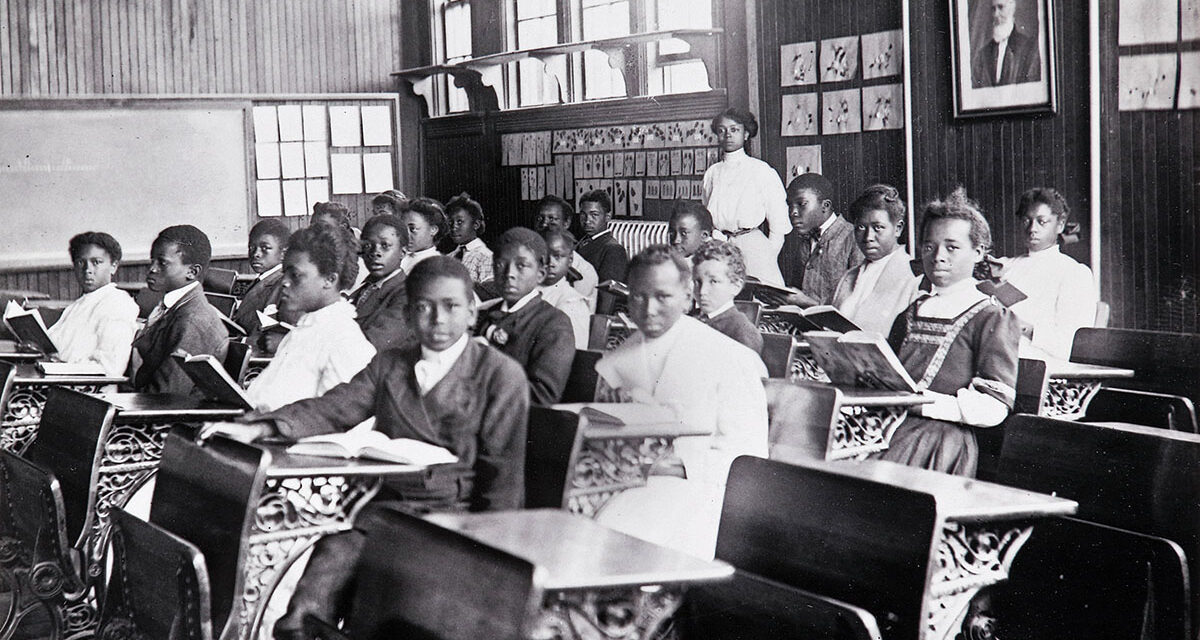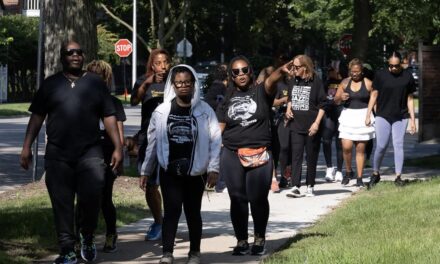
Among the photographs that make up “A Long Arc,” an exhibition documenting the American South from the 1840s to the present, is James Van Der Zee’s powerful depiction of a classroom in Phoebus, Virginia. The photo, dating to 1907, represents the Du Boisian dream that I, like so many generations of Black Americans, have built my life around. When I first arrived to teach English at the University of Vermont, in 2001, I kept an image taped to my computer, a picture of an old Black woman sitting in a chair reading while a young Black woman stands behind her, pointing to the book, presumably helping the older woman make her way through the pages. I kept it there to remind myself that my purpose was something larger than my own needs and desires. It was helpful in those lonely, early days, when I was as uncertain of the life I had chosen as I was of the state in which I had chosen to live it. Below the image, for a caption, I typed out and pasted a line from the prologue of Invisible Man: “Old woman, what is this freedom you love so well?”
In those days, like all days, I held fast to the joke I often tell about myself, that I am a child of immigrants on both sides: Trinidad on my father’s side and the Deep South on my mother’s. Education was the vehicle for my parents’ freedom and self-advancement. Fittingly, they met at Fisk University in Nashville, where they began to build a life that continues to keep me on course, even as far away as Vermont.
My parents lived many lives, together and apart. For both of them, a crucial life began in classrooms. My mother always excelled in school. In the Jim Crow South of Mississippi, it was a space for a Black girl to dream, and for imaginative children living under repressive regimes, dreaming is as essential as the elements. Inside those storied wooden classrooms, my mother learned how to live, even when other parts of life baffled her. In a society where children were meant to be seen and not heard, my mother made sure she was always in the teacher’s line of sight, her hand sticking straight up. She was that kid. In a world where girls and women paid dearly for talking back, my mother was wise in the classroom. In a culture where women were praised for deferring, my mother wasn’t satisfied unless she was at the top of her class. She was a sickly child, and the adults who loved her considered her an angel, too good for this world, the way Little Eva in Uncle Tom’s Cabin is too good for this world, a tan Shirley Temple whose straight hair was lovingly coaxed into ringlets for family photos. Among her peers at school, however, my mother was crafty, determined, and calculating, and she had a very smart mouth. Teacher’s pet. She was the mother of my dreams. I look for her in every classroom I enter.
My mother’s light skin and long, straight hair brought her trouble her whole life. People judged her by her hair, so much so that for most of the time I knew her, she kept it hidden, folded into a bun she wore at the back of her head. Like Janie in Their Eyes Were Watching God, she did not compose and did not claim the stories her skin and hair told about her. I see her now in the small, light-skinned boy in James Van Der Zee’s photo taken at the Whittier Preparatory School, a worried look on his face, his copper curls almost fading into his teacher’s skirts, his pale skin disappearing among the crisp, starched white blouses of his peers, his entire body aglow with the truest story of a nation’s secrets and shame. At the back of the room, looming above the eager brown heads full of promise, is a portrait of a formidable white man—it’s like a scene from Invisible Man.
For a brilliant, delicate Black girl growing up in the segregated South, there were predators everywhere. In those all-Black classrooms with talented, ambitious young Black teachers, my mother was safe and rewarded and cherished for being exactly who she was. In the Du Boisian formula, she was being prepared for life as a Race Woman—a helpmeet. She would need the right Race Man, with a strong enough arm to link hers through, so that they together could build a life made of service.





